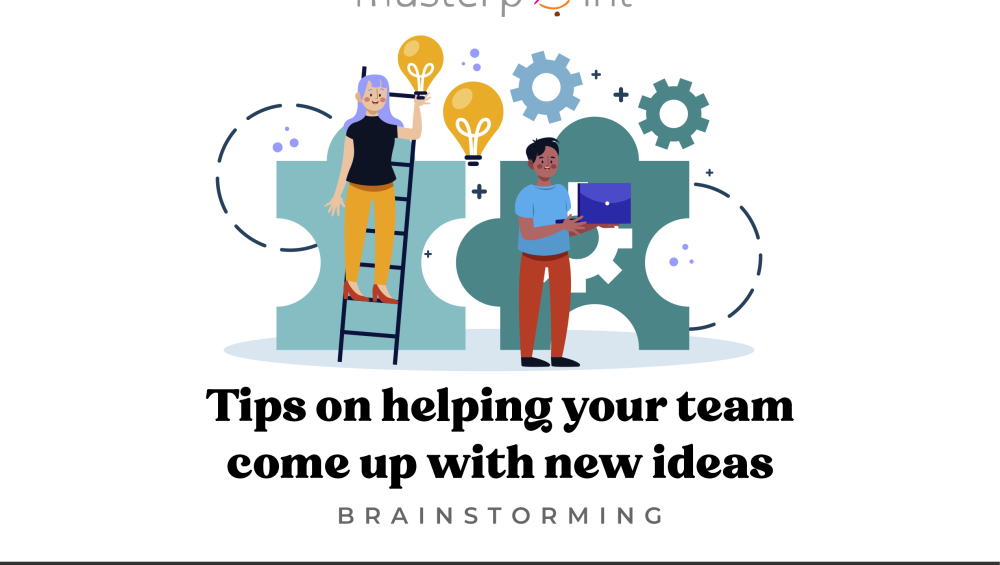Brainstorming in modern-day workspaces, refers to a collaborative process where teams come together to generate ideas, solve problems, or explore new opportunities. It requires active participation, open communication, and creative thinking to spur innovation and produce valuable outcomes.
Let’s explore some characteristics of brainstorming in modern workspaces:
Inclusive and Diverse: Modern brainstorming emphasizes inclusivity and diversity, bringing together individuals from different backgrounds, perspectives, and areas of expertise. This diversity enhances the range of ideas and promotes unique insights.
Technology-Enabled: Modern workspaces often leverage technology to facilitate brainstorming. Digital collaboration tools, such as virtual whiteboards, online brainstorming platforms, and video conferencing, allow teams to collaborate and generate ideas regardless of their physical location.
Hybrid Collaboration: With the rise of remote work and hybrid work models, brainstorming often occurs in a hybrid environment. Teams may include both on-site and remote participants, necessitating the use of virtual tools and platforms to facilitate real-time collaboration.
Agile and Iterative: Brainstorming in modern workspaces often aligns with agile principles and iterative approaches. It emphasizes rapid ideation, quick feedback loops, and the ability to refine and iterate on ideas based on ongoing discussions and evaluations.
Design Thinking and User-Centric Approach: Brainstorming in modern workspaces may incorporate design thinking principles, focusing on understanding the needs and perspectives of end-users or customers. It encourages teams to empathize with users, define problems or challenges, ideate potential solutions, prototype, and test ideas iteratively.
Data-Informed Decision Making: Brainstorming sessions in modern workspaces often involve leveraging data and insights to inform decision-making. Teams may analyze market trends, customer feedback, or data analytics to generate ideas that are grounded in evidence and have a higher likelihood of success.
Hybrid Brainstorming Techniques: Modern brainstorming often combines traditional brainstorming techniques with newer approaches. For example, teams may utilize mind mapping, SWOT analysis, the six thinking hats method, or the design sprint methodology to structure and guide the brainstorming process effectively.
It is highly effective to create a safe and open culture, this makes it easier to foster creativity and generate new ideas within a team. Here are some tips to help your team come up with fresh and innovative ideas during brainstorming sessions:
Create a safe and inclusive environment: Encourage a non-judgmental and open atmosphere where everyone feels comfortable sharing their ideas. Emphasize that all ideas are welcome and will be considered.
Set clear goals and objectives: Define the purpose and desired outcomes of the brainstorming session in advance. This provides a focus for the team and helps guide the ideation process.
Diversify the team: Include team members from different backgrounds, areas of expertise, and perspectives. A diverse group can bring a wider range of ideas and approaches to the table, stimulating creativity and fostering innovative thinking.
Use structured techniques: Employ brainstorming techniques such as mind mapping, SWOT analysis (Strengths, Weaknesses, Opportunities, Threats), or the SCAMPER method (Substitute, Combine, Adapt, Modify, Put to another use, Eliminate, Reverse) to stimulate idea generation and provide a framework for thinking.
Encourage active participation: Ensure that everyone in the team is actively involved and engaged in the brainstorming process. Encourage even the quieter members to contribute by explicitly seeking their input and opinions.
Build on ideas: Encourage the team to build on each other’s ideas. Rather than dismissing or criticising ideas, prompt the team to explore how ideas can be developed further or combined with other concepts.
Set quantity targets: Encourage the team to generate a large quantity of ideas. By aiming for a high volume of ideas, you can increase the chances of finding novel and innovative solutions.
Embrace wild ideas: Encourage the team to think outside the box and explore unconventional or seemingly impossible ideas. Sometimes the wildest ideas can spark innovative thinking and lead to breakthrough solutions.
Take breaks: Incorporate short breaks during longer brainstorming sessions to give participants time to refresh their minds. Stepping away from the session can help prevent mental fatigue and enhance creative thinking.
After the brainstorming session, review and evaluate the ideas as a team. Identify the most promising ideas and discuss their feasibility and potential impact. Prioritize the ideas that align with the goals and objectives defined earlier. Remember, brainstorming is just the beginning. Implementing the selected ideas, refining them, and taking action is equally important. Encourage the team to stay committed to the process and see the ideas through to fruition.

